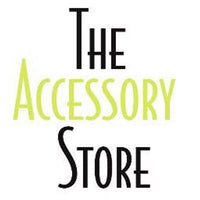Light Bulbs 101- "What am I looking for"????
We all need light bulbs at one point or another. But the variety and type of light bulbs can be overwhelming and confusing! The Accessory Store carries or can order just about any type of light bulb imaginable, although we specialize in decorative incandescent bulbs. In this article, we will discuss the basics of light bulbs, and what you should be looking for to get your fixture just right.
Step 1: Let's identify the basic type of bulb that you are looking for. Our store carries: incandescent, florescent and halogen. Our new WAC under-counter lights feature LEDs as well.
Incandescents- The stereotypical Edison bulb, the light bulb that has been around for as long as you can remember. Not the most energy efficient, this bulb does tend to cast a nice glowing yellow-white light that emulates a candle. Tends to be the least expensive and most decorative and timeless.
Halogen- A bulb that is filled with an inert gas, these tend to be pricier in the short run, but far more energy efficient and long-lasting in the long run. The bulb does give off a slightly less personal whiter light. Great for indoor and outdoor spotlights and display lights, less popular for the typical lamp.
Florescent- In the past, these were just used for utility lighting and office lighting, fluorescence have expanded into the common home with CFLs (Compact Florescent Light Bulbs). Very long lasting and energy efficient, these bulbs are good for environmentally (and budget) conscious users. Complaints with this bulb include a rather unfriendly white light, a problem manufacturers are working to fix. Although heralded as environmentally friendly, these bulbs do carry small concentrations of mercury, and are supposed to be disposed of as a hazardous waste.
Step 2: The Base!
Light bulbs typically have three types of bases. The Standard (also called "medium" or "Edison"), the candelabra, and the European. There is also a mogul base reserved for very large bulbs. Halogen and florescent bulbs carry more complex varieties of bases (e.g. bi-pin). You need to know which type of base your fixture has before you go bulb shopping! We also carry a variety of adapters, such as European to American, that will solve your problem of always having to buy exotic bulbs!
Step 3: Wattage and Voltage.
Check either the label on the socket or the owners manual of your fixture to figure out the maximum and recommended wattage and voltage that you can have in your fixture. Never exceed these maximums! They are there for safety and fire hazard reasons. Also keep in mind how close to a lampshade the bulb will be. If it's a very tight space, you may need to use a lower wattage to prevent burning the shade. Also keep in mind what the fixture will be used for: Reading lights need more wattage, decorative lights need less. Keep in mind that the type of bulb, fixture and finish of the bulb will also vary the amount of light seen!
What is voltage? Voltage is basically the difference in electrical energy level between two different things. An easy way to remember it is to compare it to water flowing through a pipe...the voltage would be the pressure of the water flowing through the pipe!
What is wattage? Wattage is the power that the electricity provides. A higher watt bulb will give more lumens (or brightness) than a lower wattage of the same bulb. If you use the pipe analogy again, the wattage would be how hard a hose at the end of the pipe would spray!
Step 4: Get creative!
Once you have those basics down, you can play around with all the different shapes, sizes, textures and finishes that bulbs can have. Our most eclectic collection of bulbs are our decorative incandescent bulbs! We have frosted or clear, turn tip or torpedo, silicone and satin varieties.
